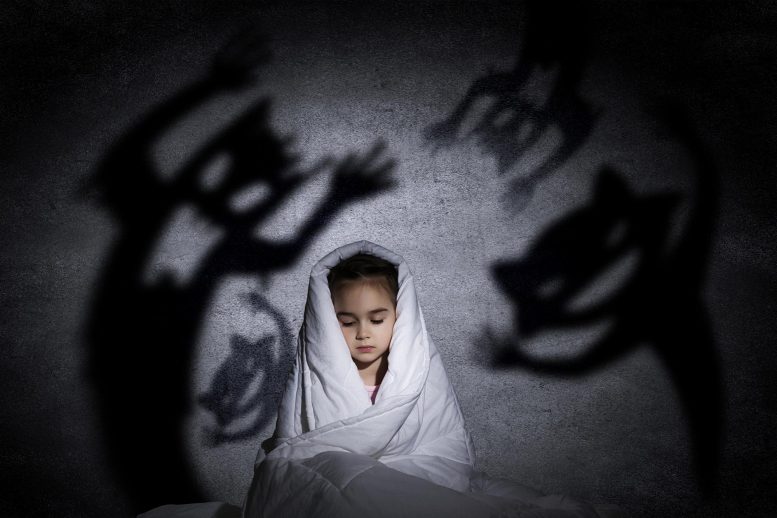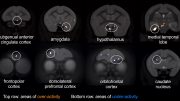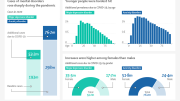
The study found that people who are more inhibited in early childhood and who do not react normally to prospective rewards as adolescents are more likely to develop depression later in life.
A longitudinal imaging study connects reduced ventral striatum activity to later depression.
A recent imaging study led by a scientist at The University of Texas at Dallas discovered early risk factors linked to children’s temperament as well as a neural process that might predict whether a person would develop depression and anxiety in adolescence and early adulthood.
The study, which was recently published in JAMA Psychiatry, followed a cohort of 165 people from the time they were 4 months old between 1989 and 1993 until the age of 26.
According to the study’s co-author, Dr. Alva Tang, an assistant professor of psychology in the School of Behavioral and Brain Sciences, people who were more inhibited as children and who also don’t respond typically to potential rewards in adolescence are more likely to suffer from depression later in life, more so than anxiety.
“The findings highlight different mechanisms in the brain and relate them to who is at greater risk for developing different mental health issues,” said Tang, who conducted the research at the University of Maryland, College Park, before joining UT Dallas in August. “These results could inform the development of prevention-oriented treatments tailored to the individual.”
When newborns are introduced to new objects, people, or situations, some react favorably and approach them without fear, while others react with caution or avoidance. This distinction defines uninhibited versus inhibited behavior.
“We know that inhibited children are more likely to have anxiety disorders later, particularly social anxiety, that begins in late childhood to adolescence,” Tang said. “Less has been known about depression, which generally has a later onset, in young adulthood. But we do know that people who have had an anxiety disorder are 50% to 60% more likely to have depression later in life, so inhibited children should have a higher risk for depression as well.”
Tang’s research is unique for its characterization of the patients’ early temperamental risks as well as the length of time they were studied.
“To show any relation with increases in depressive symptoms over time, we have to follow subjects for decades because full-blown syndromes usually do not emerge until young adulthood,” she said.
As young children, the subjects were categorized as either inhibited or uninhibited. As adolescents, they underwent functional MRIs while completing a task to measure their brains’ reaction in anticipating rewards — in this case, trying to win money.
“We looked at the ventral striatum, a brain region well studied in terms of understanding depression in adults, to see if it’s tied to maladaptive processing in the reward centers of the brain,” Tang said.
Some study participants showed a blunted response in this brain region in reaction to potential monetary rewards.
The researchers found that the association between inhibition at 14 to 24 months of age and worsening depressive symptoms from ages 15 to 26 were present only among those who also showed blunted activity in the ventral striatum as adolescents. There was no similar association with anxiety.
“We found that behavioral inhibition was related to worsening depressive symptoms into adulthood. This supports the assertion that this temperament shows a stronger relation to developing anxiety in adolescence, but in adulthood, it is tied more strongly to depression. However, not all inhibited children develop anxiety or depression,” Tang said. “It was particularly the inhibited children who showed blunted striatal activity who were more likely to become more depressed in young adulthood.”
Tang said her past research has related anxiety to neural networks and processes subserving attention and executive functions, whereas the current work highlights reward and motivational centers in the brain related to depression.
“This study is new because it can separate different kinds of brain correlates for these different conditions,” she said.
There are already interventions for socially anxious and behaviorally inhibited children that improve social and cognitive skills, Tang said. Additional interventions for these children could target motivational deficits, such as helping them learn to actively create conditions where they can be socially engaged with peers and where they can seek out positive experiences.
“This might in turn reduce the likelihood of developing depression that originates from being socially disengaged or missing out on opportunities for positive experiences,” she said.
She said that future studies could examine the efficacy of programs that target maladaptive reward processing among anxious youths in reducing risks for later depression.
Anxiety and depression are complex conditions that could be set off by a multitude of factors — genetic, environmental, and others, Tang said.
“Here, we show strong evidence that both early temperamental risk factors and maladaptive neurocognitive processing of rewards are involved in contributing to the development of depression.”
Reference: “Striatal Activity to Reward Anticipation as a Moderator of the Association Between Early Behavioral Inhibition and Changes in Anxiety and Depressive Symptoms From Adolescence to Adulthood” by Alva Tang, Ph.D., Anita Harrewijn, Ph.D., Brenda Benson, Ph.D., Simone P. Haller, Ph.D., Amanda E. Guyer, Ph.D., Koraly E. Perez-Edgar, Ph.D., Argyris Stringaris, MD, Ph.D., Monique Ernst, MD, Ph.D., Melissa A. Brotman, Ph.D., Daniel. S. Pine, MD and Nathan A. Fox, Ph.D., 26 October 2022, JAMA Psychiatry.
DOI: 10.1001/jamapsychiatry.2022.3483
The study was funded by the National Institute of Mental Health and the Social Sciences and Humanities Research Council of Canada.










What is with all the big blocks of whitspace in your articles? It’s time to get better website technicians – this is really poor rendering.